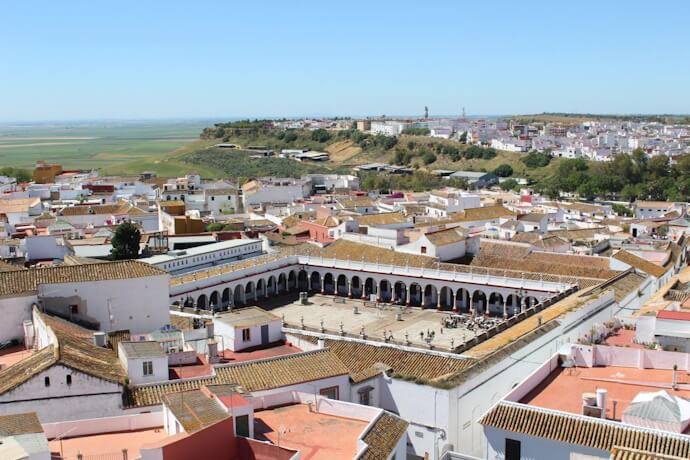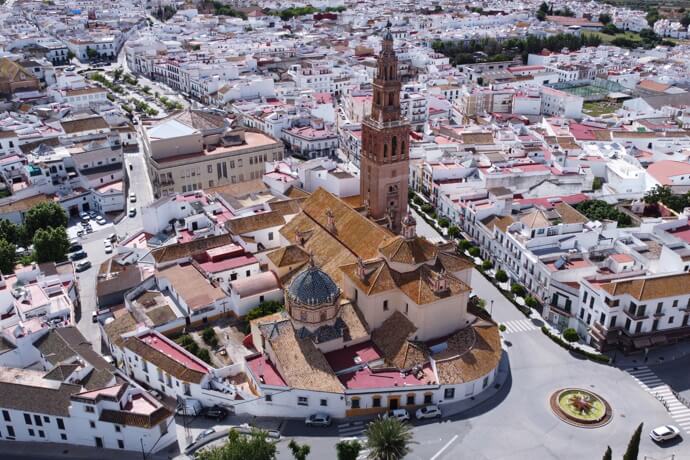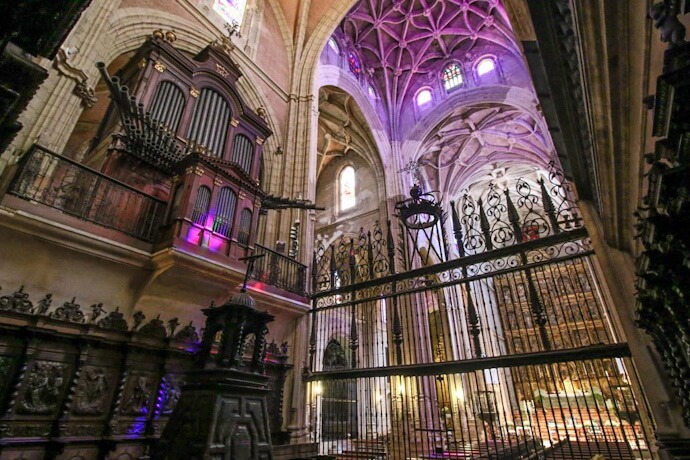Welcome to Carmona, a charming town nestled in the heart of Spain that promises a delightful journey through history, culture and picturesque landscapes. Located in the southern region of Andalusia, it is considered one of the oldest cities in Europe and has been inhabited early times by Phoenicians, Romans and Arabs.
The city exudes an ancient ambience with remnants of its former walls and the Alcázar del Rey Don Pedro, an Arab fortress built at the town’s highest point. Here, you will also find the Parador de Carmona, housed in another Moorish fortress.
Carmona has long been a coveted destination that beckons travellers with its rich heritage and warm hospitality. However, it has been gaining increased attention as it awaits potential inclusion as a UNESCO World Heritage site. It is time to put the spotlight on Carmona's cultural significance and get to know its potential for international recognition!
Where is Carmona located?

Carmona is one of the jewels of Andalusia, approximately 33 kilometres (20 miles) northeast of Seville. The town's geographical location, defined by the Guadalquivir River, was a key factor in shaping its rich history and cultural heritage.
The picturesque Andalusian countryside that encircles Carmona is dotted with olive groves, cattle and vineyards. Consider taking some time to unravel the rural areas, where you can discover traditional haciendas and experience the authentic rural life of southern Spain.
Carmona’s location not only makes it an ideal destination for daytime exploration but also positions it as a perfect overnight retreat. This grants a good night’s sleep in a more tranquil atmosphere away from buzzing Seville.
Having a car provides further flexibility to explore the wider region. Beyond Carmona, you will scenic drives across the countryside rich in dazzling hidden gems.
A historic centre worth exploring

Embracing Andalusian customs, Carmona is adorned with whitewashed buildings. However, the city's charm is further enhanced by splashes of colour on the windows and doorways. Take a leisurely stroll along the cobblestone streets and be sure to discover the enchanting Casa Palacio de Los Aguilar and Palacio de los Rueda.
Step into the past and witness ancient Moorish, Roman and Christian influences converge as you wander through the labyrinthine streets of Carmona's historic centre, one of the oldest cities in mainland Europe. The many archaeological sites around Carmona bear witness to its history, dating back over 6,000 years. Puerta de Córdoba and Puerta de Sevilla serve as tangible remnants of Andalucia's illustrious Roman past.
Carmona’s main highlight is the Alcázar del Rey Don Pedro, a historic Arab fortress perched atop the town's highest point. Built during the reign of King Peter I of Castile in the 14th century, the architecture reflects pure Moorish design, characterized by elements such as horseshoe arches, intricate tilework and geometric patterns, accompanied with beautiful water features, courtyards and gardens. The Alcázar stands as a testament to Carmona's historical significance and architectural splendour.

Only a few minutes away is the Santa Maria Church, which, similarly to other Spanish churches, traces its roots to an ancient mosque site. Reflecting Andalucian-Gothic architecture, the expansive orange naves create a striking contrast against a tiled roof. Preserving the Moorish legacy, the church features an original patio with a vaulted roof and a resplendent gilded altar.
Your journey to Carmona's Roman history is only complete after visiting the Necropolis Romana, an ancient Roman cemetery from the 1st century BC with well-preserved tombs and mausoleums. The famous Tomb of the Elephant is believed to have served as a temple for the Roman god, Mithras.
When you feel like coming back to the present day, head to the Plaza del Mercado, an old monastery transformed into a lively square dotted with cafes and tapas bars where you can enjoy authentic Andalusian cuisine and immerse yourself in the Spanish way of life.
Andalusian Cuisine

Andalusians are confident that their cuisine is one of the best in Spain. You will have to delve deep into their gastronomy to rank it yourself! We are sure of one thing: their diverse culinary tradition reflects the region's cultural influences and the bounty of their land and sea. Keep reading to find out what to expect from this tantalizing gastronomy!
The number one ingredient you will find in most meals is olive oil. Andalusia is renowned for its olive oil production and it plays a fundamental role in the region's cuisine. From drizzling it over salads to using it in various dishes, it is a staple in Andalusian kitchens.
The concept of tapas originated in Andalusia and the region is celebrated for its diverse and flavourful small plates. From marinated olives to patatas bravas (spicy potatoes) and gambas al ajillo (garlic shrimp), tapas are a social and gastronomic delight.
Gazpacho, a refreshing cold soup, is a summer favourite in Andalusia. Made with tomatoes, peppers, onions, cucumbers, garlic and seasoned with olive oil and vinegar, it is a perfect way to beat the heat and keep energized. Similar to gazpacho, salmorejo is a thicker cold soup made with tomatoes, bread, olive oil and garlic. It is often garnished with hard-boiled eggs and jamón (cured ham).

One of the most popular dishes in coastal areas is the Pescaíto frito, featuring a variety of small fish (such as anchovies or sardines) coated in flour and deep-fried. Crispy and delicious, it is served with a wedge of lemon. Rabo de Toro (bull’s tail stew), is exactly what the name suggests. It is a hearty stew made from bull's tail, slow-cooked until tender.
Andalusia is home to some of the finest cured ham in the world. Jamón Ibérico, made from acorn-fed Iberian pigs, is prized for its rich, nutty flavour and melt-in-your-mouth texture. A lighter option could be Huevos a la Flamenca (Flamenco eggs), a dish made with eggs, chorizo, tomatoes, peas, peppers and sometimes ham and it is baked in a clay dish.
Finally, for dessert, you have many notable treats to choose from, including churros (fried dough pastries), pestiños (honey-coated pastries), cazón an adobo (dogfish marinated and fried) and the famous Tarta de Santiago (almond cake).
An Arab fortress which is now a Parador
Carmona has, in fact, another acclaimed Moorish fortress from the 14th century, the Alcázar de la Puerta de Sevilla. Together with Alcázar del Rey Don Pedro, these two structures controlled the access to the town and played a vital role in Carmona's defence strategy.
Recently, Alcázar de la Puerta de Sevilla was renovated to its former glory to house the Parador de Carmona, a luxurious hotel that offers a special fusion of history and modern comfort, as a tribute to Andalusia’s legacy. Here you can expect upscale accommodations and exceptional dining, while taking advantage of the majestic courtyards and gardens that hold fantastic views.
Inside, Mudejar patterns are the main feature of its exquisite décor, which creates unique spaces such as the interior patio, the Salón Bermejo, with its tapestries and antiques, and the old refectory, transformed into a swanky restaurant.
Its tranquil atmosphere, combined with the astonishing views and fragrances of the gardens, is open for everyone to enjoy!
An immersive experience
Embrace the essence of Spain in Carmona, a town where history comes alive and time seems to stand still. Wander through ancient gates, explore architectural wonders and uncover a rich tapestry of traditions. From the commanding views atop the Alcázar de la Puerta de Sevilla to the ornate details within La Iglesia de Santa Maria, Carmona invites you to stroll along historic streets and savour the tranquillity of its gardens. The charm of Carmona lingers long after your visit, leaving you with memories of a place where the past unfolds seamlessly into the present.




